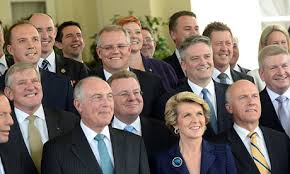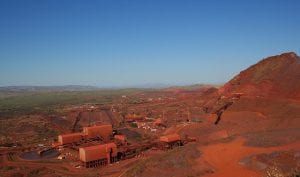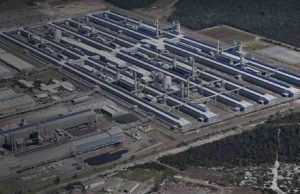Prime Minister Tony Abbott, and most ministers in his new government, like to claim that smart policy, not ideology, will drive its major policy decisions.
Of course, this is nonsense, and the opposite it true. And it could not be more clear from the two key documents released on Tuesday, the Mid Year economic forecast, and the issues paper for the upcoming Energy White Paper.
There are several big themes emerging – bugger the sound business case for schemes such as the Clean Energy Finance Corp and the energy efficiency opportunities scheme, and ignore the profits that the CEFC can deliver – and pursue instead some sort of Martial fantasy of the Green Army. At enormous cost.
To hell, also with environmental programs, such as funds for the Environmental defenders office, and write in protection for state owned assets, such as the network operators. Even without the optics of slashing funding for indigenous legal aid, and boosting funding for coal miners’ legal battles against native title, it quite takes the breath away. But here is a brief summary.
Clean Energy Finance Corporation: While in Opposition, Abbott and his team railed against the idea of the “Bob Brown Bank”, claiming it would cost $790 million. It now accepts that those figures are completely wrong, and the CEFC would actually make $439.2 million over the next four years. No matter, says Joe Hockey: “Well, maybe it does make money,” the AFR quoted him as saying on Tuesday. “But they don’t have to account for the $10 billion that goes into it in the first place and the cost of those funds.” Actually, it does. It’s a notional number but the CEFC lends at around the twice the cost of government funding.
Energy Efficiencies Opportunities Program: One of the attractions of the CEFC was its ability to leverage private finance – $2.80 was raised for every $1 invested by the EFC. The EEOF had an even better success rate, $2.90 of private money for every $1 invested – but that too has been trashed. Rob Murray-Leach, the head of the Energy Efficiency Council, said its members were “absolutely livid” about the surprise cut, which he said had created huge uncertainty in a fragile economy. Generators – both state owned and private – have fought against energy efficiency programs because it subtracts from demand, lowers wholesale electricity prices and reduces profits. Indeed, the EEC said the program had delivered energy savings of $1 billion a year, a huge benefit for Australia’s manufacturing sector. But that probably corresponds to a similar amount of revenue foregone by generators. Hence the decision.
Green Army: In the Alice in Wonderland world of the Abbott government, the only fully costed measure of its climate program is the absurd Green Army. And what a cost – $813 million out to 2017/18, so people can pick up litter, clear waterways, plant trees and protect mangroves. And what of the disappearing Emissions Reduction Fund? Apparently, nowhere to be seen in the MYEFO papers.
Environmental Defender’s Office: Another notable funding victim was the Environmental Defender’s Office. The Federal government ended, without warning, $10 million in funding over four years, for nine states and territories EDOs, which specialise in public interest environmental and planning laws. The EDOs in WA, Tasmania, Northern Territory and north Queensland are likely to close because of this, and others will have to cut back significantly on legal services. The EDOs were instrumental in providing legal advice for action over climate, threats against the Great Barrier Reef and environmental protection from major mining projects. Ah, so.
Network protection: The energy white paper had an important message for consumers – it really doesn’t matter what happens from now on, electricity costs are not going down. That’s because the government says it is committed to protecting the (mostly state owned) government network assets and their revenue models, despite the incursions of rooftop solar and battery storage. “To the extent that the current generation capacity is replaced by lower emissions forms of generation and energy efficiency improves, network costs will remain static and a significant component of electricity prices,” the issues paper states. “This is to meet reliability standards and to provide a regulated rate of return on the existing asset base,” the issue paper says. That is despite the growing reality, as highlighted by the Grattan Institute last week, that the only way to lower prices for all is to write-down the value of the assets. These assets are not needed to the extent once thought.
Nuclear: The Abbott government and its acolytes are obsessed about centralised generation. Can’t stand the thought of all those solar panels and storage, even if it does represent the “democratisation” of energy and should play to right-wing thinking about looking after yourself. But it doesn’t do much for state-owned regulated monopolies, or state owned generators for that matter, so the Energy White Paper wants to have a look at nuclear, and in particular small modular reactors (actually, they are not that small, about 100-300MW, although no-one really knows because no one has built one). How would that be financed? With a government loan of course, it’s never been done anywhere without them. Perhaps they could ask the CEFC.
RET Review: The terms of reference for the RET review have not yet been released, because the government is still working out how it can appoint the people that can deliver the desired outcome. But the rhetoric is not good. Each mention of renewables is accompanied by a complaint about their cost, even though they are a fraction of the network charges (see above). Abbott did it again on Wednesday, saying that renewables were putting price pressure on bills. Perhaps Abbott hasn’t read that the rise in gas prices were the biggest single addition to Queensland bills, and other states will surely follow. And each time Macfarlane speaks of renewables, he mentions the reduced demand suffered by the coal generators. No kidding, that is what is supposed to happen (See UBS warning about fate of utilities). Macfarlane, though, has form on this and orchestrated the stopping of the renewable target under the Howard government.








